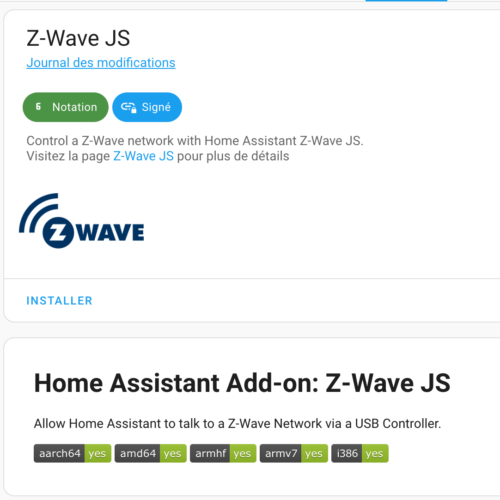You may have seen my recent article on the death of Z-Wave ? Well, here's some good news: Paulus Schoutsen, the brains behind the popular home automation app Home Assistant, has made a bold decision by focusing on the Z-Wave protocol!
Home Assistant Joins the Z-Wave Alliance
Z-Wave is a local standard for smart homes that has existed since 1999. Thanks to its operation at sub-GHz frequencies, it can create a reliable mesh network spanning an entire home. Its reliability has also contributed to its popularity, powering brands such as Yale locks and Amazon Ring. The Z-Wave standard is developed by a consortium of companies within the Z-Wave Alliance.
From the very beginning with Home Assistant, Paulus Schoutsen integrated Z-Wave into his home automation solution. Initially, it relied on OpenZWave, before switching in 2021 to Z-Wave JS, created by Dominic Griesel. Z-Wave JS is a fully open-source implementation of the Z-Wave protocol. Combined with Home Assistant and a Z-Wave USB dongle, it offers users the best possible Z-Wave experience. Dominic is now employed by Nabu Casa (the company that owns Home Assistant) and can work full-time on Z-Wave JS thanks to the revenue generated by Home Assistant Cloud subscribers. The Home Assistant developers have extensively tested Z-Wave JS with the Home Assistant community. This global community has access to a wide variety of Z-Wave devices of all generations. This has allowed Z-Wave JS to manage devices and their specific features since the first version of Z-Wave.However, the ambitions for Z-Wave JS go beyond simply providing a robust Z-Wave implementation. The developers aim to make it easier for businesses to develop Z-Wave controllers and expand the Z-Wave ecosystem. A broader ecosystem is more attractive to manufacturers, which translates into more choices for users. And because Z-Wave operates locally, it remains a local choice.
Home Assistant announced a few days ago that it has joined the

Z-Wave Alliance
to obtain official certification for Z-Wave JS. This certification proves to other companies that Z-Wave JS is a complete and correct implementation of the Z-Wave standard. It will give businesses confidence in adopting Z-Wave JS to integrate Z-Wave into their products.HomeSeer, for example, announced that it is migrating its platform to Z-Wave JS. Jeedom has already been using it for some time. Open HomeWith Home Assistant, Paulus Schoutsen has a vision for the smart home he calls the “Open Home.” It's based on three core values: privacy, choice, and sustainability. Anything that respects these values deserves to be adopted by the community. That's why Home Assistant has also joined the Connectivity Standards Alliance (CSA) to participate in the development of Matter and Zigbee, in addition to the Z-Wave Alliance. Z-Wave aligns with these three values: data remains local, you can combine Z-Wave devices from any manufacturer, and the devices will continue to work even if the company that made them no longer exists. It's an important standard for the “Open Home.” That's why, even though Z-Wave, Zigbee, and Matter are competing standards, Home Assistant has joined both the Z-Wave Alliance and the CSA and will continue to support each standard. Every smart home is different. For Home Assistant, users should have choice and be able to select the standard that best suits their home. And competition between standards pushes them to improve and innovate, which ultimately benefits users.






Please remain courteous: a hello and a thank you cost nothing! We're here to exchange ideas in a constructive way. Trolls will be deleted.